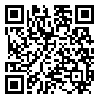BibTeX | RIS | EndNote | Medlars | ProCite | Reference Manager | RefWorks
Send citation to:
URL: http://tkj.ssu.ac.ir/article-1-475-en.html
Introduction: Mental workload is a set of factors that affect on the mental processes of information, providing decision making and individual reactions in the workplace. This study aimed to assess the mental work load and effective factors on it among the emergency medical personnel during the rescue missions, and transportation of the injured persons.
Methods: This cross-sectional study was conducted on 96 emergency medical personnel in Isfahan in 2013. For data collection, a standard questionnaire was used. The NASA TLX is an assessment tool that rates perceived workload on 6 different subscales: Mental demand, Physical demand and temporal demand, Frustration, effort, and performance. Score of mental work load was determined by NASA-TLX (V.2) software. Using SPSS 18 through Kolmogorov–Smirnov (K-S) test, independent t test, spearman and multivariate linear regression were analyzed.
Results: Average scores on the mental workload during the complex mission emergency medical personnel according to the weight and rating of each of sextet scales, (81.25±4.81) were calculated. The highest score sextet scales of NASA-TLX mental workload was for mental demands (90.10±8.41) and the lowest score related to the disappointment (55.20±8.01) of emergency medical personnel during the mission emergency medical personnel.
Conclusion: Results showed that the emergency medical personnel at the mission complex emergencies exposed to high mental load that the main reasons were caused of the need to high speed action, make important decisions, and fast transportation of injured persons to the medical centers. This mental workload can lead to increase the error in the emergency medical personal, therefore, ergonomic and psychosocial interventions are suggested to reduce the human errors, stress and stress and fatigue among the emergency medical personnel job performance.
NASA-TLX, Mental workload, Emergency personal
Received: 2014/04/24 | Accepted: 2014/08/19 | Published: 2016/01/11
| Rights and permissions | |
 |
This work is licensed under a Creative Commons Attribution-NonCommercial 4.0 International License. |



